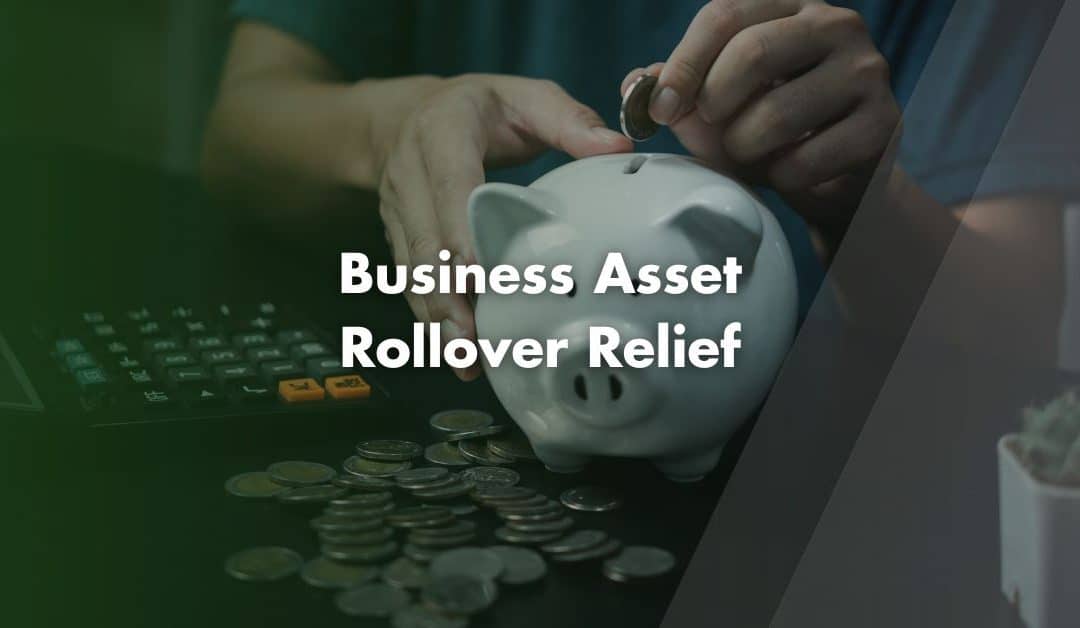If you sell a business asset, you will likely face a Capital Gains Tax bill. However, if you plan to reinvest the proceeds into another business asset, you may be able to delay paying the tax by claiming Business Asset Rollover Relief.
What is Business Asset Rollover Relief?
Business Asset Rollover Relief allows you to defer your Capital Gains Tax bill when you sell (or otherwise dispose of) a qualifying business asset and use the proceeds to buy a new qualifying asset.
This relief allows you to “roll over” the gain into the new asset, deferring your tax until you sell the replacement asset. You will still eventually pay tax, typically when you later dispose of the replacement asset. This relief does not eliminate the tax; it simply defers it, often for many years.
If you have not yet purchased the replacement, you can also claim Provisional Relief by declaring your intention to reinvest proceeds, without making a separate formal claim at that stage. If you do not follow through within the allowed time, the deferred tax becomes payable.
Who Can Claim Business Asset Rollover Relief?
You can claim Business Asset Rollover Relief if you use the old and new assets in one of the following:
- A trading business
- A profession, vocation or employment
- A furnished holiday letting business
- Commercial woodlands
- When providing an asset to your personal company
You do not have to be trading continuously at both dates. HMRC allows up to a three-year gap between one trade ending and another beginning.
To qualify for full relief, you must:
- Reinvest all proceeds from the sale of the old asset
- Acquire the new asset (or enter into an unconditional contract to do so) within 12 months before 36 months after the sale of the old asset
- Use both assets for qualifying business or professional purposes
- Claim the relief within the time limit
What Assets Qualify?
Business Asset Rollover Relief applies to a range of business assets, including:
- Interests in land or buildings used for trade
- Fixed plant and machinery (but not moveable vehicles such as lorries or vans)
- Ships, aircrafts, hovercrafts or spacecrafts
- Goodwill
- Certain quota rights, licences or entitlements (such as milk quotas or fishing rights)
To qualify, you must use these assets in your business. Personal-use assets, investment properties and residential lettings generally do not qualify. If you only used part of the asset for business purposes, you may receive Partial Relief.
How the Relief Works
Imagine you are a sole trader and you sell an office building for £300,000. You originally bought it for £200,000 which means your gain is £100,000. Normally, you would pay Capital Gains Tax on this £100,000 gain.
However, if you invest the entire £300,000 into a new qualifying office, the £100,000 gain rolls over. You will not pay Capital Gains Tax now. Instead, the gain deducts from the value of your new building for tax purposes.
HMRC will treat your new building as if it cost £200,000 rather than £300,000. They defer the £100,000 gain and you only pay Capital Gains Tax when you sell the new property.
Partial Relief and Depreciating Assets
You might not always reinvest all the proceeds. You may receive partial relief if you:
- Only reinvest part of the proceeds from the sale
- Only partly used the sold asset for business purposes
- Reinvest in a depreciating asset (with a useful life of 60 years or less)
For depreciating assets, the gain is not deductible from the new asset’s cost. Instead, it is held over, or “frozen”, until the earlier of:
- 10 years after acquiring the asset
- You disposing of the asset
- You stop using the asset in your business
How to Claim Business Asset Rollover Relief
To claim Business Asset Rollover Relief, you will need to complete HMRC form HS290 Form (Business Asset Roll-over Relief) and submit it with your Self Assessment tax return. You must make your claim within four years from the end of the tax year in which the later of the sale or the new purchase occurred.
For example: If you sell an asset in May 2022 and buy the replacement in August 2024, your deadline to claim is 5th April 2029.
Business Asset Rollover Relief vs Disposal Relief
You may also be considering Business Asset Disposal Relief (BADR). Both reliefs reduce your Capital Gains Tax liability, but in different ways:
| Relief | Purpose | Effect | Best For |
|---|---|---|---|
| Rollover Relief | Reinvestment | Defers the gain until you sell the replacement asset | Continuing in business and preserving cash flow |
| Disposal Relief | Retirement or exit | Reduces Capital Gains Tax rate on qualifying disposals | Winding down or selling up |
For disposals on or after 6th April 2025, the Business Asset Disposal Relief rate is 14%, with a £1,000,000 lifetime limit. For disposals before 6th April 2025, the rate is 10%.
Contact Us
We are not just accountants; we are Chartered Accountants with one of the most reputable and premium accounting bodies. We are registered and regulated by ACCA; so you can rest assured that you are in good hands. Knowing this, don’t hesitate to get in touch with us if you require assistance: Pi Accountancy | Contact Us
This article is for general informational purposes only and does not constitute legal or financial advice. While we aim to keep our content up to date and accurate, UK tax laws and regulations are subject to change. Please speak to an accountant or tax professional for advice tailored to your individual circumstances. Pi Accountancy accepts no responsibility for any issues arising from reliance on the information provided.

